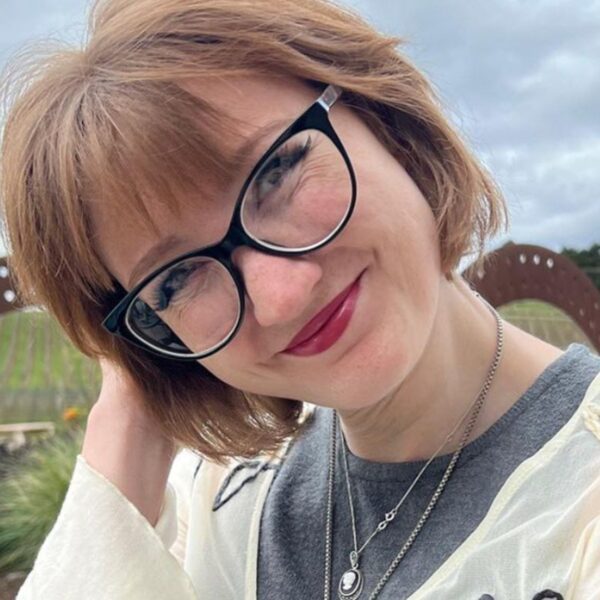Park Lawn Corporation (OTCPK:PRRWF) Q1 2024 Earnings Conference Call May 10, 2024 9:30 AM ET
Company Participants
Jennifer Hay – Chief Strategy Officer and General Counsel
Brad Green – Chief Executive Officer
Dan Millett – Chief Financial Officer
Conference Call Participants
Martin Landry – Stifel
Irene Nattel – RBC Capital Markets
George Doumet – Scotiabank
Zachary Evershed – National Bank Financial
John Zamparo – CIBC
Operator
Greetings. Welcome to the Park Lawn Corporation Q1 2024 Results Earnings Call. At this time, all participants are in a listen-only mode. A question-and-answer session will follow the formal presentation. [Operator Instructions]
Please note this conference is being recorded. I will now turn the conference over to your host, Jennifer Hay. Ma’am, you may begin.
Jennifer Hay
Thank you, Holly, and good morning, everybody. This is Jennifer Hay, Park Lawn’s Chief Strategy Officer and General Counsel. Thank you for joining us today on our first quarter 2024 earnings call.
Before we begin our prepared commentary on the quarter, please note that you can find a detailed breakdown of our 2024 first quarter results in our financial statements and MD&A, which are available on our website and on SEDAR+. Today’s call is being recorded, and a replay will be available after the call.
Please be aware that certain information discussed today is forward-looking in nature. Any such information is subject to risks, uncertainties and assumptions, which could cause actual results to differ materially. Please see our public filings for more information regarding forward-looking statements.
During the call, we will reference non-IFRS financial measures. Although, we believe these measures provide useful supplemental information about our financial performance, they are not recognized measures and do not have standardized meanings under IFRS. Please see our public filings for additional information regarding our non-IFRS financial measures, including for reconciliations to the nearest IFRS measures.
I will now hand the call over to Park Lawn CEO, Brad Green, to open our discussion today.
Brad Green
Thank you, Jennifer, and good morning, everyone. In addition to Jennifer, with me on the call today is our CFO, Dan Millett. I would like to start by providing a brief overview of our performance in the first quarter, then Dan will provide some additional financial details, and finally, I will provide some closing remarks.
As we discussed at length just a couple of months ago, 2023 ended with a significant transformation for the organization with the disposition of 83 legacy businesses. As we expected, this allowed us to focus intently on creating a more efficient operating environment.
In addition to that disposition, our team continues to be sharply focused on improving the infrastructure of our organization, including things like the implementation of a refined operating model, the implementation of a new sales and commission structure, developing and utilizing detailed reporting to provide real-time support to operation and sales, the continuing enhancement of FaCTS, the launch of Park Lawn University, our new educational platform and the list goes on.
Combining these various strategic initiatives together, we are, for the first time, really starting to see the benefits of these actions. We now have confidence that our infrastructure has the ability to scale and grow with Park Lawn long into the future.
With that hard work, during the quarter, we saw meaningful improvements in our operating performance, both on revenue and in our margins. Despite the pull-forward effect from COVID still negatively impacting the death rate, having greater visibility with FaCTS in a real-time environment is allowing us to operate better and more efficiently. Moving forward, we expect to continue to refine our operations, experiencing incremental improvements along the way.
During the quarter, we also closed on a business in Colorado, which ties together Park Lawn’s presence on the Western Slope. We are quite pleased with the progress that this business is making and integrating into Park Lawn, another area we have been focused on sequentially improving.
With that, I’ll turn the call over to Dan, who will provide details regarding our first quarter results.
Dan Millett
Thank you, Brad, and good morning, everyone. My comments this morning will focus primarily on our operating results from the first quarter 2024 relative to the first quarter 2023. The first quarter revenue was in line with our expectations, which decreased overall by approximately 11.9% to roughly $76.4 million, principally as a result of the disposition of the legacy assets completed in December, partially offset by acquired acquisitions or acquired operations as they continue to positively contribute to Park Lawn’s growth.
It is important to point out that when we strip away the impact from the disposition, comparable operations only decreased marginally by approximately 2.7%, largely as a result of the decline in death rate, as well as the decrease in our large group sales in our cemeteries.
As we’ve noted in prior quarters, this decrease was anticipated following two years of sales fueled by COVID. We do not — we do believe, however, that these large group sales will stabilize with the normalization of the death rate and that you’ll see some of these in the remaining months of the year.
In addition, mortality decreased year-over-year for the eighth straight quarter, impacting at-need sales. Although the impact of the pandemic still lingers with better expense management and an increase in our average revenue per call, our margins from comparable funeral operations increased approximately 250 basis points. And overall, our margin from comparable operations was relatively flat year-over-year.
From a corporate perspective, as we have discussed over the last few quarters, we continue to make investments in our corporate infrastructure to support the organization for the long-term. Our corporate costs during the quarter are in line with our expectations at roughly 10.25% of revenue. Following the disposal of legacy assets in December, 2023, quarter-over-quarter, we saw an approximate 4.4% decrease in corporate costs.
As Brad mentioned a few moments ago, we continue to focus on integrating our corporate platform with technology and refining our processes and resources to increase productivity. Part of which includes moving to our new Downtown Houston location this summer.
In that respect, we expect that the additional costs relating to the move and build out of the space. And have occurred approximately $1.8 million of capital costs relating to the build out during the quarter.
While we experienced strong results in the first quarter, the first quarter is typically one of our better quarters and therefore we have not adjusted our 2024 financial guidance outlook. As a reminder, our 2024 outlook includes adjusted EBITDA with a midpoint of $75 million and adjusted earnings per share with a midpoint of $0.85 per share.
With only one quarter under our belt, continued decreases in mortality, stubbornly high interest rates and acquisitions expected to be weighted to the second half of the year, we have maintained our range of expectations and will continue to assess the range as the year unfolds.
On March 31, 2024, we had approximately $145 million outstanding on our credit facility. In addition to the credit facility, at March 31st, we had other debt of approximately $13.3 million, finance leases of approximately $14.3 million and cash on hand of $17.7 million. Excluding our debentures, our net debt was approximately $155 million as of March 31, 2024.
At March 31st, our leverage ratio was approximately 2.15 times based on the terms of our credit facility and approximately 3.03 times including our outstanding debentures. This continues to provide us equity — to execute on our expected growth initiatives.
The first quarter resulted in an increase in net earnings of approximately 14.7% to approximately $5.25 million, compared to $4.58 million in the first quarter of 2023. Following the disposition of our legacy assets, increases in interest rates during the first half of 2023, an increase in amortization depreciation from ongoing operations, adjusted net earnings for the first quarter decreased by 12.2% over the comparable quarter from 2023 and was approximately $7.57 million or $0.215 per share, compared to $8.61 million or $0.249 per share in Q1 2023.
I will now turn the call back to Brad for some closing comments.
Brad Green
Thank you, Dan. Our first quarter performance was a solid start to the year and is right in line with our expectations. As we look forward to the rest of the year, we expect that death rates will remain relatively flat to slightly lower as a result of the pull forward from COVID, which is expected to impact our at-any-call volume of both our funeral homes and cemeteries.
With that in mind, we do expect to see modest same-store growth, which will come principally from efficiencies and stronger execution supported by our improved infrastructure. Like in years past, we still anticipate a majority of our growth will come from acquisitions, which we expect to come on Board as the year progresses.
Our pipeline remains robust and we are actively in discussions with more than one premier business in high-growth demographic markets. And although we can’t control when a seller chooses to sell their business, we fully anticipate being able to meet our previously disclosed range of $5,200 million in acquisitions during the calendar year.
With that in mind, as Dan noted, we affirm our annual guidance at this time, but we will continue to reevaluate our performance and guidance ranges as we move forward through the remainder of the year.
I’ll now turn the call over to Holly for any questions.
Question-and-Answer Session
Operator
Thank you. [Operator Instructions] Your first question for today is from Martin Landry with Stifel.
Martin Landry
Hi. Good morning, guys.
Brad Green
Good morning.
Martin Landry
My first question is on your cemetery segment. It looks like on an organic basis, your cemetery revenues have been declining for the last five quarters. And I know that there is — the sales are lumpy there and you’ve had group sales in the past that blur a little bit the analysis. But I was wondering, when could we see a return to growth in comparable sales for that segment? And also, could you talk a little bit about the pipeline of lot development that you have right now and how much — how big it is versus historical?
Brad Green
Yeah, Martin. I would start by saying our cemeteries performed exactly in line with our expectations this quarter, at almost 41.4% margins. When you talk about comparable growth, if you take the Group sales out of the mix, that actually happened this quarter.
We knew that we would not have Group sales similar to those in Q1 of 2023. That was forecasted and expected and those Group sales will come over the course of the year, albeit probably in smaller amounts.
We specifically disclosed those Group sales now so that you guys and our investors can track them. And as we said in the past, this will make some of the quarter-over-quarter comparisons chunky at times, but we’re guiding to where we’re going to get at the end of the year, so it should take some surprise out of the process.
So when you ask me when you’re going to start seeing our comparable sales improve, I would say that our cemetery sales were, if you take the Group sales out of the mix, were exactly where we expected them to be this quarter, and improving, again, with Meek being out of that process, with the divestitures being gone. And regarding the second part of your question…
Martin Landry
Yeah. The second part of the question was…
Brad Green
Regarding the…
Martin Landry
Go ahead.
Brad Green
Go ahead, Martin.
Martin Landry
No. I think you’re on your way to answering the second part of my question, so I’ll let you go.
Brad Green
I actually did not understand the second part of your question, so if you’ll let me know what — if you’ll restate it, I’ll take a shot at it.
Martin Landry
Absolutely. I was wondering, how’s the pipeline for lot development this year and how does that compare to historical levels?
Brad Green
I am not — I don’t understand what you mean by lot allotment and I — so help me with that.
Martin Landry
Your CapEx for your cemetery, your lot development, sorry.
Brad Green
Got it. Got it. Yeah.
Dan Millett
So, Martin, in the past, we’ve kind of been between 50 basis points to 100 basis points of our total revenue that we spend on just regular inventory development. I don’t think that’s going to be any different this year.
I think the one thing that we continue to look at is the development of the Westminster Mausoleum in Toronto. That will have a significant outsized impact on our capital costs relating to inventory replacement. It’s a very large mausoleum.
We’re currently looking at design and development right now, so timing is a little bit up in the air still, but that will get going probably towards the end of this year, maybe early next year. Development in the City of Toronto isn’t the smoothest and easiest process, but that will change things once we get it going, but obviously, that’s a cost we probably incur once every 10 years.
Martin Landry
Okay. And just to wrap up on the cemetery sales, Brad, just to be clear, did I understand correctly that your Group sales, your done lapping Group sales as of Q2, is that what you said?
Brad Green
I don’t think — no, I don’t think that’s what I meant to say, if that’s what you heard me say.
Dan Millett
And then just — Martin, I think, plainly is the Group sales are lumpy for lack of a better term. We came off in 2022 and 2023, two of the — two record years effectively in terms of Group sales. As we mentioned when we put out our outlook, we don’t expect that — those sales to be completely linear, but those businesses in the Northeast are built to have those Group sales, so we will see more Group sales as the year goes on and it will be variable when we look at it on a quarter-to-quarter basis. Sometimes they’ll be up, sometimes they’ll be down.
Brad Green
Yeah. And to add to that, what I was attempting to say in my first answer is, I mean, looking at the first notes that came out last night referring to our cemetery sales, if I look at it in two different ways, we have the Group sales and we have the Park sales, and our Park sales did exactly what we expected them to do this past quarter and we’re very happy with that. So when the Group sales come in, as they do, they have an oversized impact, and so, I think, we’re saying the same thing three times.
So I’m very happy with where the cemeteries are now, especially now that the Meek assets are out of there and we can focus on the better businesses that we have. And when the Group sales come in, it’s going to make quarters that they’re in look very good on the cemetery cells. It’s going to make quarters that they’re not in, look not as favorably compared to the previous one if there happens to be one in there. But at the end of the year, which is what we’re guiding to, the cemeteries will be exactly where we expect them to be.
Martin Landry
Okay. Thank you.
Brad Green
Thank you.
Operator
Your next question is from Irene Nattel with RBC Capital Markets.
Irene Nattel
Good morning, everyone. A couple of questions from me, please. First of all, can you talk — nice to see the improvement in margins of the business. Can you talk about what we can expect to see as we move forward? And of course, the degree to which FaCTS is helping as you really look to optimize the productivity and efficiency now that you’ve got the business where you want it to be?
Brad Green
Sure. Obviously, we’re very happy with where the margins ended up this quarter, but we do expect improvement throughout the year. We pointed to two main things that have consistently said that over the past few quarters, as you pointed out one of them.
FaCTS gives us the ability in real-time with reliable data to look at what’s going on in our businesses so that our operators can do what they need to do and we saw that impact here in the first quarter.
Also, simply taking out the legacy assets that were gone through the Meek transaction had an impact on those margins as well. But to, I guess, to summarize that answer, we definitely like where the margins are right now and we expect them to improve.
Irene Nattel
That’s great. Thank you. And then just moving on, please, to M&A, I understand clearly at this point in mid-May, back end loaded. You mentioned something about a large, high growth, high quality asset that’s sort of in your sight. Can you talk about what you’re seeing in terms of opportunity and really what’s realistic for us to expect as we move through the year in terms of transactions and also multiples?
Brad Green
Yes. So, the — generally in the industry, you’re seeing more and more activity. You’re also seeing something that I think is kind of interesting. Not only had some of the consolidators that probably made decisions through COVID that they wish they had not have made, are not only not making acquisitions anymore, you’re starting to see discussions of dispositions from those types of businesses.
So, we’re seeing activity kick up from the brokers, we’re seeing activity come in to Park Lawn, and we’re seeing what I’ve discussed in the past, which is a limited number of people out there that are willing to buy businesses in the current environment and we happen to be one of them because of decisions we made during COVID and our leverage ratio.
I feel very confident that we’re going to be in that range of acquisitions by the end of the year. And bluntly, we could have been at the minimum range of acquisitions by just saying yes to businesses that we said no to in the last 14 days. There’s plenty of opportunities for us to make acquisitions and we’ll make those.
But right now, Irene, I will tell you, we were selective in the past. We are being super selective now so that the acquisitions that we bring on Board we know will be immediately accretive and easier to integrate, because there’s so much opportunity out there. We want to make the right decisions in this high interest rate environment.
Irene Nattel
That’s really helpful, Brad. And just to confirm, at this point in time, you’re really looking at major acquisitions that are exactly the quality that you want, exactly the price that you want and that have some sort of upside. I guess what I’m saying is, you are only — you’re focusing on the assets that are really the ones you want as opposed to the ones that you could have?
Brad Green
I couldn’t say it better than that and it’s not that we weren’t — it not that we haven’t always done that, Irene, it’s just that in the current environment we’re in, we’re being even more selective. And quite frankly, I think, where we’ve come as an organization coming into 2024, being a part of Park Lawn was a big deal before. It’s even a bigger deal now because there are folks that sold their businesses to other consolidators that actually understand what that means now, and the stability and the long-term growth potential that this company and this management team bring. The right buyers understand that now, because they see the mistakes that their friends made and the instability that exists in their businesses now.
Irene Nattel
That’s really helpful. Thank you.
Operator
Your next question for today is from George Doumet with Scotiabank.
George Doumet
Good morning, Brad and Dan. I just want to talk a little bit about your current assets that you have and the infrastructure that’s in place. Where would you see the most upside in terms of field margins over the next 12 months or 18 months? Is it mainly the cemetery or the funeral? Just maybe a little bit of color in terms of where we can see improvement there?
Brad Green
I’m excited about all of it because I think there’s improvement everywhere. I’ll give you maybe the top three areas that I see. We’ve spent some time restructuring our sales function, whether it be the new compensation plan, focused on the actual restructuring of it, focusing on a new CRM through salesforce.
We’ve done a lot of good things there and we’re really focusing on adding the right counselors and keeping our turn rates lower than it has been in the past. All of those things are working. So I look forward to seeing growth in sales. And it’s not going to happen in the second quarter necessarily, but it’s coming, right? So I definitely see our sales function being an opportunity.
We made a lot of acquisitions, as you guys know, in 2021 and 2022 and in 2023, and we’re still focusing on those acquisitions and bringing those up. So those will have a direct impact on our margins.
And FaCTS is still having a big impact on businesses we’ve owned for a period of time. I mean, each one of them — each business has a monthly scorecard now with benchmark achievement plans and I expect to see improvement in our legacy businesses as well.
And that’s — to me, that’s good news, because I don’t — there’s no problem. There’s nothing that’s broken anymore. The infrastructure is in place and now we’re just looking at getting incremental improvement from multiple areas as opposed to relying on one.
So, as I said in my last call, when we ended 2023 and coming into 2024, things were going exactly the direction we wanted and we actually, in our mind, see that in these results in the first quarter and we’re pretty excited about it, because with lower revenue, we managed our businesses to higher margins and that’s what we should do.
We can’t affect the death rate, but what we can do is operate these businesses effectively and efficiently when we get the data. So putting all those things together, we’re going to focus on moving — maintaining and moving that EBITDA margin.
George Doumet
It sounds to me like it’s almost segment agnostic. It’s going to be across the Board, right?
Brad Green
Yeah. I mean, it really is, but we actually get to work on it now, right? So, with what we have in place and the tools and the hard work that we did in 2022 and 2023, we’re actually using those now. We’re seeing the benefits of it. So those discussions are happening now at a management level. Like, here’s how we’re going to go improve the business as opposed to, we need to get this fixed. That’s where we’re sitting in 2024.
George Doumet
Okay. Also notice the buyback activity slowed versus last quarter. If you can talk to that. Just a general question. Let’s say you get the right larger asset out there. Would you be willing to pay a higher multiple than where you’re trading at to acquire that asset? Thanks.
Brad Green
Well, I mean, that’s a fun question because the multiple we’re trading at right now, to me, is offensive. But, yes, I mean, as we’re making acquisitions, I don’t know that I would necessarily say that we would pay more than the multiple that we’re trading at, but we probably would.
Yes, I mean, we can’t impact the stock price as it is right now. We don’t believe the stock price is indicative of the value of this organization and when people figure that out, we’re going to have a much different stock price. So, yeah, I guess, we would if we needed to.
George Doumet
Okay. And can you comment on the buyback activity slowing down this quarter? Should we look into that at all?
Dan Millett
Yeah. George, it’s Dan here. As you’re aware, the first quarter has a really short blackout window. We expected our stock to actually trade better following our Q4 results, which sequentially continued to show improvement as does Q1 here. However, I think, the short answer to your question is, if the stock continues to trade where it’s been over the last two months, yes, we’re going to execute on our NCIB.
George Doumet
That’s really clear. Thanks, guys. Good luck.
Brad Green
Thank you.
Operator
Your next question for today is from Zachary Evershed with National Bank Financial.
Zachary Evershed
Good morning, everyone. Congrats on the quarter.
Brad Green
Thanks, Zach.
Zachary Evershed
Could you start out with giving us some details around the manager swap for the Canadian Care and Maintenance Funds?
Dan Millett
Yes, Zach. It’s Dan here. Really nothing too crazy happening there. In Q4, we made a change in terms of our investment manager for our Canadian Trust Fund. Historically, we were a lot more concentrated with two funds and concentrated in oil and gas and financials.
We made a change to the investment manager and effectively repositioned the Trust Fund to be a lot more balanced. We’re still kind of targeting on the endowment care side a yield between 4%, 4.5%.
But the funds in Canada are a lot more balanced now, positioned for long-term growth and reduced risk. So, some short-term distribution implications, but long-term, I think, the funds are much more appropriately allocated to provide both yield and capital appreciation.
Zachary Evershed
That’s helpful. Thanks. Do you think the quarterly run rate will bounce back as soon as Q2?
Dan Millett
I won’t, no, that would be way too quick. It will come back a little bit. But, no, again, this is more medium-term, long-term thinking. Obviously, with more capital appreciation, there’s a larger base to invest, ultimately affecting the distribution, so on and so forth. So, it’s not something that just changes overnight.
Zachary Evershed
Understood. Thanks. Do you — give us an idea. So, FaCTS is really spitting out a ton of new data, which I’m a big fan of. Could you outline for us maybe what’s been the most useful that you’re now able to track, whether it’s at the management level or on the ground? When you talk about working on the business and being able to make improvements, what’s the most useful data you’re getting out of that?
Brad Green
Well, the data is useful because it’s consistent and accurate. So just start there. So, no matter what it is that we’re looking at, the fact that we can pull it and rely on it immediately, as opposed to being concerned about it coming from six or seven different systems and whether it was input correctly, you’re really just talking about something that an entire, if you can, spine, that when everything is entered into it, we know what we’re getting out is reliable.
But what it’s really driving is we were able to put in our benchmark operating model, which exists all across the U.S. and in Canada now, and both the funeral home and the cemetery, they have six benchmarks and I won’t go into too much detail. I’m happy to talk to you about this offline.
But it basically pulls all of the information we need into these benchmarks. It allows us to give a look at these businesses on a weekly and monthly basis. It’s literally everything from contracts to the averages to gross margins to consolidated labor percentages to EBITDA margins.
I mean, we’re seeing everything that we want to see. It goes into basically a scorecard for the business and then the managers are able to sit down with the area VPs of the VPs and really focus on what they need to focus on.
All of our folks are willing to do whatever they need to do to make the business stronger and grow and serve our families. It’s just being able to point them in the right direction that’s important and FaCTS is giving us that.
Zachary Evershed
Excellent. Thanks. Then just one last one. In terms of what you’re seeing quarter-to-date, how are your averages and volumes looking?
Brad Green
We are very happy with April. Obviously, the call volume in the first quarter, we actually see that as returning to normal. March wasn’t as strong as we would have liked it to be, but we just looked at that effectively as things going back to normal. We had a strong March of 2023, and what I think I’m seeing now, especially now that April has come in, is just kind of a natural ebb and flow of mortality.
Now, the pull-forward effect is still there and we expect that we’re still going to see that impact probably in the second quarter, maybe into the third. But at the end of this, we’re still looking for our call volume to be flat to slightly down at the end of the year, depending on COVID.
But what’s great about it now is, it’s more predictable. It was always predictable in the past, but you add the predictability. In other words, the variance isn’t too great, plus the ability to see it in real-time and react to it and manage the business to it. That’s all that can be asked of us as a management team.
We can’t affect the death rate, but we can manage to it. Actually, I — we wouldn’t react to a month being off or a quarter being off and April kind of showed us that. So, we’re still guiding you guys to look at it to be flat to slightly down and that’s the way we’re operating the business.
Zachary Evershed
Great call. Thanks. I’ll turn it over.
Operator
Your next question is from John Zamparo with CIBC.
John Zamparo
Thank you. Good morning. I wanted to ask about the average revenue per call that was up nicely this quarter. I wonder if you could talk about your ability to take pricing in this environment and what kind of observations are you seeing broadly from consumers?
Brad Green
Yeah. So, we definitely, as we’ve said in the past, we monitor the pricing on a monthly basis in each of our businesses. We’ve also said in the past that we are not interested in increasing our prices for a short-term impact or a short-term pop for a quarterly basis.
What we’ve been doing is effectively trying to keep our pricing consistent with inflation so as not to impact our market share, because we believe, this management team believes, that in the long-term, that’s going to be the better play than increasing prices more than we normally do.
We don’t see any, and I know this is maybe inconsistent with what has been reported with the other publicly traded companies, but we’re not seeing pressure on our average or pricing as a result of the lowering consumer making different decisions. We’re just not seeing that.
So hopefully that answers your question, but we’re pretty comfortable with where the averages are. And part of that also just deals with our operators doing a better job and our sales folks doing a better job.
John Zamparo
Okay. That’s good insight. Thanks. Sticking with that and more of a housekeeping question, I’m trying to reconcile the comparable funeral home numbers. You said there’s the 5% or 5.1% increase in pricing, a 4.4% decline in volume, so that would suggest an overall positive on a comparable basis, but it was down, I think, around $600,000. What’s the other component to that calculation that we’re missing?
Brad Green
Yeah. Almost all of that revenue decrease was in — was related to our general legacy commission due to switching pre-need insurance carriers. We fully expected that during the transition period, which is now complete. If I could put an exclamation point on that, we saw like a 42% increase in April over March.
So we knew that we were going to have — we knew we were going to have some impact on the revenue side when we switched our pre-need carriers. It happened, it’s over, and so that’s the gap you’re talking about.
John Zamparo
Got it. Okay. That clears that up. And then one last one on the corporate costs. These dropped meaningfully quarter to quarter. I wonder how much of that was driven by the divestiture or is that internal initiatives? And I know in the past we’ve talked about this number relative to sales. Is that still the right way to look at this, given the divestiture or should we look at it on a dollar’s basis now?
Dan Millett
I think you can look at it. We continue to look at it as a percentage of sales, John. The decreased quarter-over-quarter was primarily more so efficiencies. We haven’t made massive changes to our corporate infrastructure relating to the disposition, because our expectation is that we’re going to redeploy those funds, and obviously, changing that structure and then having to bring people back or whatever the answer is creates more confusion and disruption than we really would like to care for.
So long story short is we think that number will continue to come down, especially as we grow. We think we have runway with our current infrastructure to acquire. In the past we’ve talked about how we’ve disposed of 83 businesses and we can replace that — those 83 businesses with about 20 businesses when we acquire. So you can kind of envision the impact and improvements that we’ll have on the corporate infrastructure. So hopefully that answers your question.
John Zamparo
It does. Thank you very much.
Operator
We have reached the end of the question-and-answer session, and I will now turn the call over to Brad for closing remarks.
Brad Green
Well, I thank everyone for joining us today and I can assure you this management team is looking forward to recording the remaining quarters in 2024. Thank you.
Operator
This concludes today’s conference and you may disconnect your lines at this time. Thank you for your participation.














